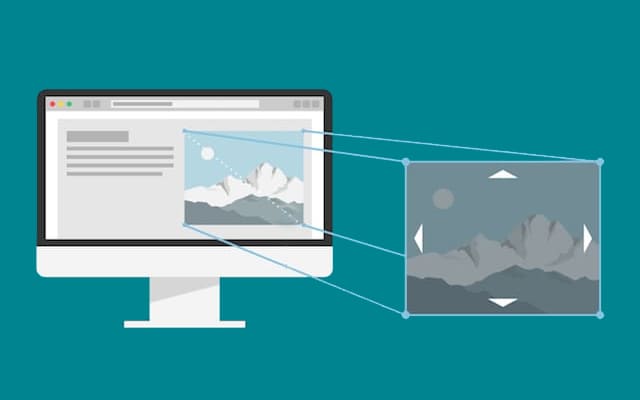In the digital world, where visuals play a pivotal role in engaging users, optimizing images for Search Engine Results Pages (SERPs) is crucial for online visibility. When your images are optimized effectively, they not only enhance user experience but also boost your website’s ranking on search engines.
In this article, we will explore essential tips to optimize your images for SERP, explained in a way that everyone can understand.
What Exactly is Image SEO?

Image SEO, also known as image optimization, involves refining the images on your website to ensure Google can easily locate and rank them. In simpler terms, it facilitates search engines like Google in comprehending your content, making it more likely for your images to appear in image search results.
Achieving this requires optimizing your images specifically for the web, a process we’ll guide you through. However, before delving into the optimization techniques, let’s understand the significance of incorporating images into your content in the first place.
Why Integrate Images into Your Content?
Let’s address the fundamental question: Why incorporate images into your content? The use of images is pivotal because they enrich your content, capturing people’s attention effectively.
Source: StatCounter Global Stats – Search Engine Market Share
When utilized thoughtfully, images can pique curiosity, enticing viewers to click through to your site, and consequently bolstering your rankings in search results. Notably, image search constitutes approximately 20.45% of all searches conducted on major platforms like Google. This statistic underscores the importance of integrating images into your content and optimizing them for SEO purposes.
To begin with, consider whether your images align with your page’s topic and, more significantly if they enhance the value of your content. Placing the most pertinent image at the top of your page is essential, and using original photographs exclusive to your blog or website enhances authenticity.
However, these are merely the basics. There are additional steps to take to secure a presence in Google’s image search and enhance your rankings, and we’ll delve into these strategies next.
1. Choose the Right Format
When it comes to images, formats matter. The most common formats are JPEG, PNG, and GIF. From a layman’s perspective, think of JPEG as the go-to option for photographs, PNG for images with transparency (like logos), and GIF for simple graphics and animations. Choosing the right format ensures your images look great and load fast on your website.
2. Resize Images Properly
Large images slow down your website, leading to a poor user experience. Imagine a website as a pizza delivery service – smaller pizzas (images) reach your door faster. Resize your images to the dimensions needed on your website. Many online tools can help you resize images without compromising quality.
3. Optimize Image Alt Text and File Name
Alt text is like a caption for search engines. When you provide descriptive alt text, search engines understand what your images are about. For instance, if your image shows a golden retriever playing fetch, your alt text should describe it similarly. This helps visually impaired users too, as screen readers can convey this information to them.
Just as keywords are important in the URL, the same goes for images. Keyword-rich file names can help search engine bots determine relevancy. Avoid using default image file names like, “DSC0019.jpg” as it does not give much information about the image.
Use descriptive filenames with keywords separated by “-” (hyphen). For example, “tips-to-optimize-your-images-for-SEO.jpg”.
4. Focus on Image Quality
Blurry or pixelated images are like trying to watch a movie through foggy glasses – not a pleasant experience! Ensure your images are clear and sharp. High-quality images are visually appealing and make your website more professional.
5. Use Descriptive Filenames
Imagine your image file name as the title of a book. A vague name like “IMG12345.jpg” tells search engines nothing about your image. Instead, use descriptive filenames. For example, “golden-retriever-fetching-ball.jpg” clearly indicates what the image is about. This helps search engines understand your content better.
6. Utilize Descriptive Captions
Captions are like short explanations for your images. When you provide captions, visitors get a better context of the image. This engages users and keeps them on your site longer, reducing bounce rates. Search engines also appreciate well-captioned images.
7. Implement Structured Data
Structured data is like giving your images an ID card. It provides specific information about your images to search engines. For example, if your image is a product, structured data can include details like price, availability, and ratings. This rich information helps search engines display your images more effectively in search results.
8. Optimize Image Loading Speed
Loading speed is crucial for user experience. Imagine waiting for a slow elevator – frustrating, right? Similarly, slow-loading images frustrate website visitors. Compress your images without compromising quality. This reduces their file size, ensuring they load quickly, and keeping your visitors happy.
9. Mobile-Friendly Optimization
In our mobile-dominated world, optimizing images for mobile devices is essential. Mobile users are like on-the-go readers – they need information fast and easy to digest. Ensure your images are responsive, adapting to different screen sizes without losing quality. Mobile-friendly websites rank higher in search results.
10. Regularly Update Images
Think of your website as a garden. Just as plants need regular care, your website needs updates. Outdated images are like withered flowers – they don’t attract anyone. Regularly update your images to keep your content fresh and engaging. Search engines love updated content, which can positively impact your ranking.
Conclusion
Optimizing images for SERP might sound technical, but it’s like arranging a visually appealing display in a shop window. The better your display, the more customers (or in this case, visitors) you attract.
By following these layman-friendly tips, you not only enhance user experience but also improve your website’s visibility on search engines, helping your online presence bloom.
Remember these simple tricks, and watch your website shine brightly in the digital landscape.